CarEdge saved me over 4,500 dollars on a brand new Honda Pilot. I can't say thank you enough.
Price intelligence
Find a wide range of vehicle listings with market insights on new and used listings near you.


Help us personalize your CarEdge experience — it only takes a second.
Your answers help us personalize your CarEdge journey — we’ll follow up with tips and next steps that match your buying timeline.
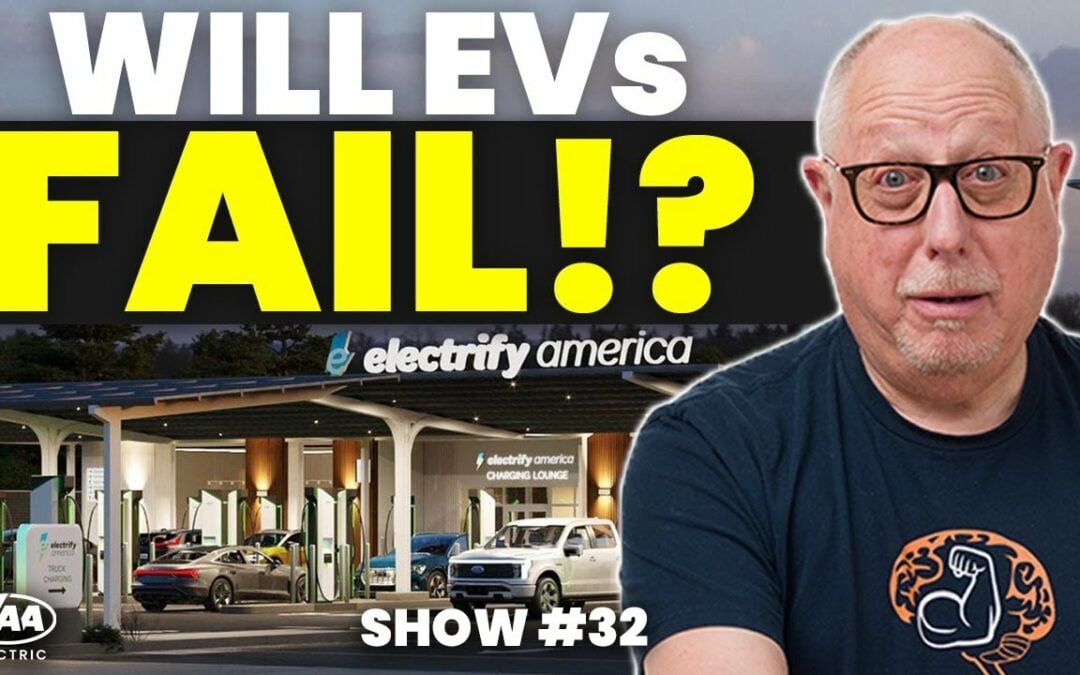
After four months of electric vehicle ownership, my perspectives about the mass transition to electric vehicles have evolved. I no longer think that everyone should run out and buy an EV right now (besides, that’s not possible). I have a greater understanding of the skepticism that accompanies the push to EVs. All-in-all, I feel that I now understand the arguments from both sides: electric vehicles are amazing, better for the planet (in the long run) and fun to drive, however EVs are not even close to being ready for mass adoption.
Automakers have committed well over half a trillion dollars to electric vehicle research and development, marketing and most importantly, charging infrastructure buildout. But the grid isn’t ready, charging providers aren’t ready, and the American public has a LOT to learn before making the switch. EVs could still fail, and bring down the automotive industry with them. We’d hate to see that. These are 5 things that must happen in this decade to prepare the world for electric mobility.
The average price paid for an EV surpassed $66,000, on par with the overall luxury segment.
For years and years, I touted the coming cost parity that would finally make EVs just as affordable as any other car. Industry experts always told us that EV price parity would come when battery costs dropped below $100 per kilowatt-hour. Just as that milestone arrived, the world was turned upside down by the COVID-19 pandemic.
Global factory shutdowns disrupted the supply chains that all automakers rely on, and most notably those related to semiconductor chip production. Without the parts to make the cars, electric vehicle growth was held back just as the public warmed up to them. Raw materials used in both vehicle and battery manufacturing increased in cost by over 100%, and many automakers have passed the premiums on to consumers.
Today, electric vehicles cost more, and inventory is slim. Kelley Blue Book’s June 2022 car price data shows that the average EV transaction was $66,000, $18,000 over the overall car market average of $48,000. One year ago, the average EV transaction was $52,486, or 10.8% less than it was in June of 2020. In short, EV prices are headed in the wrong direction just as automakers are getting serious about making them.
In the age of record smashing, here’s one that will give pause: In June, the estimated average monthly payment increased to $730, which is a new record high. A new car monthly payment now costs as much as rent in many parts of the country. We’re seeing more and more car payments over $1,000 a month. The insane records don’t end there.
More cars are being repossessed as more auto payments are going past-due. With the way things stand today, either EVs will have to become more affordable, or their luxury pricing will soon risk worsening the auto loan crisis.
Earlier this year, Rivian CEO and Founder RJ Scaringe predicted that battery shortages would be the next disruption that the automotive industry would face. In fact, automakers are already rationing the batteries they have, and those they have lined up. Ever wondered why there are so few electric full-sized SUVs? Building those at scale would require a lot more batteries.
The average EV contains $8,255 of raw materials according to CNBC. That’s more than double the amount in combustion-powered counterparts. President Biden has even authorized use of the Defense Production Act to aid the situation by increasing domestic EV production and related supply chains.
For the most part, automakers don’t make their own batteries. They rely on contracts with battery manufacturers like Panasonic, LG Chem, and CATL to supply what their lofty plans for electric vehicles will need. That’s changing little by little. Tesla has started to produce small quantities of its new 4680 battery cells next to Giga Austin.
General Motors just received a $2.5 BILLION dollar loan from the U.S. Department of Energy for manufacturing the Ultium battery in Tennessee. Slowly but surely, some OEMs are taking control of their own battery supply chains. This will be key to avoiding battery shortages.
EV market share SOARS in America. See the latest numbers.
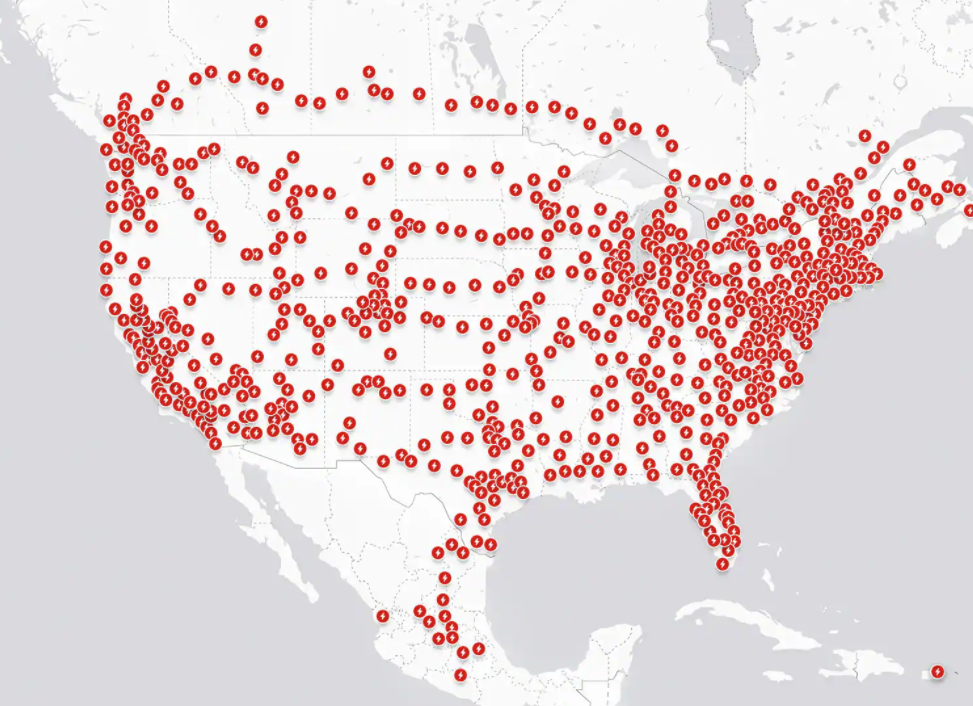
Over 62% of Americans support building out a nationwide charging network, and 39% of American drivers are considering buying an electric vehicle next time they’re in the market for a car. Frugal drivers are welcoming the fuel savings, albeit at a higher upfront cost. At current residential electricity rates, charging up is equivalent to spending about $1.00 per gallon of gas. The most expensive public chargers may approach $2.50 per gallon equivalent.
However, many Americans live in a charging desert. What good is the EV revolution if there’s nowhere to charge? Most EV drivers plug in at home, but not everyone can do that. From apartment dwellers to rural residents, owning an EV simply isn’t viable if there aren’t chargers for road trips, family visits and work transportation needs. When it makes sense for consumers, electric vehicles offer plenty of benefits. Cheaper fuel, less maintenance, sporty performance and no tailpipe emissions to name a few. But EVs risk remaining a symbol of luxury and impracticality if it doesn’t get a lot easier to charge up in America.
2021’s Bipartisan Infrastructure Act included $7.5 billion for the build-out of a national charging network. In summary, federal funding is supposed to get the ball rolling, and the private sector will take it from there. EV charging stations, particularly DC fast chargers, are really expensive to install. On top of upfront costs, America’s electrical grid is not ready for the demand that would be generated by mass adoption of EVs.
The deadline is nearing for states to submit their plans for how they will spend their allocated funding for EV charging. Will they use the funding to install reliable, standardized fast charging stations along major transportation corridors and rural areas alike? We’ll soon find out.
The following are all things I’ve encountered at Electrify America charging stations:
We need to do better to educate EV buyers and prospective EV buyers about how to drive electric without the hassles. We can’t blame the consumer, EVs bring a very different ownership experience. But whose responsibility is it to educate drivers? The dealership? The automaker? The driver themself? Guys like me?
In reality, it will need to be all of the above. General Motors is leaning heavily on the success of what they call affordable EVs to dominate sales by the end of this decade. In the first real sign that OEMs might be taking their newfound responsibility seriously, Chevrolet just launched a great live chat and immersive experience on their website that is entirely devoted to educating the public about their EVs, with an emphasis on the ownership experience. We need more of that, and soon.
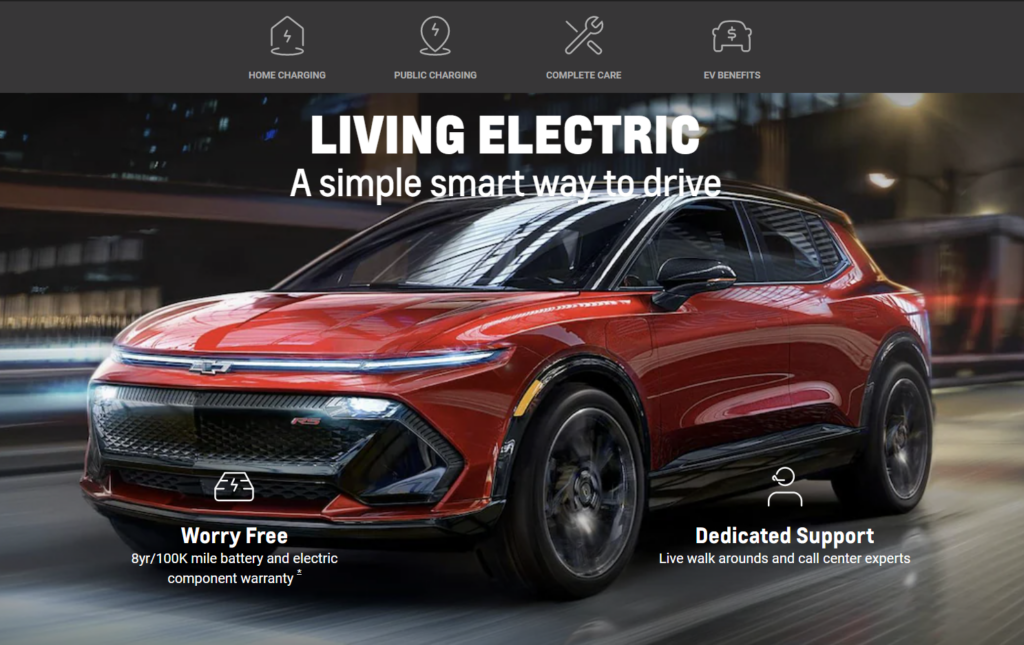
The woman I met who arrived at a charging station with 0% state of charge and no A/C should, in my opinion, be upset with her Kia dealer. She loved the car, but no one had explained to her how to plan for interstate travel in an EV. Dealers sell most vehicles in America, but the dealership sales model is under serious threat from the rising popularity of direct-to-consumer sales. Everyone wants to be Tesla. If legacy automakers are to stand a chance in the EV race, more OEMs need to prepare their dealer networks for the public education that comes along with selling EVs.
Does the lack of affordability, charging infrastructure and public awareness mean the electrification of the auto industry is doomed for failure? No, not at all. That’s because there’s still time to right wrongs, and to build out the nation’s charging infrastructure the right way. EVs are still under 6% market share in the U.S. (See the latest EV market share numbers here.) If these same problems persist when we exceed 15%, that will be real cause for concern.
It’s true that the electrical grid isn’t ready for mass adoption of EVs, but it’s getting there. Grid-scale battery megapacks (also pioneered by Tesla) are already being deployed to provide grid stability in times when the supply of electricity is not keeping up with demand. The sun only shines in the day, the wind is intermittent, but grid-scale batteries store and supply power from these renewable sources whenever they are most needed. Now, it’s like the sun is shining at night. These changes take time. Plus, the push for grid-scale battery storage could throw a wrench in EV battery supply chains. Nothing is certain, but things are moving in the right direction.
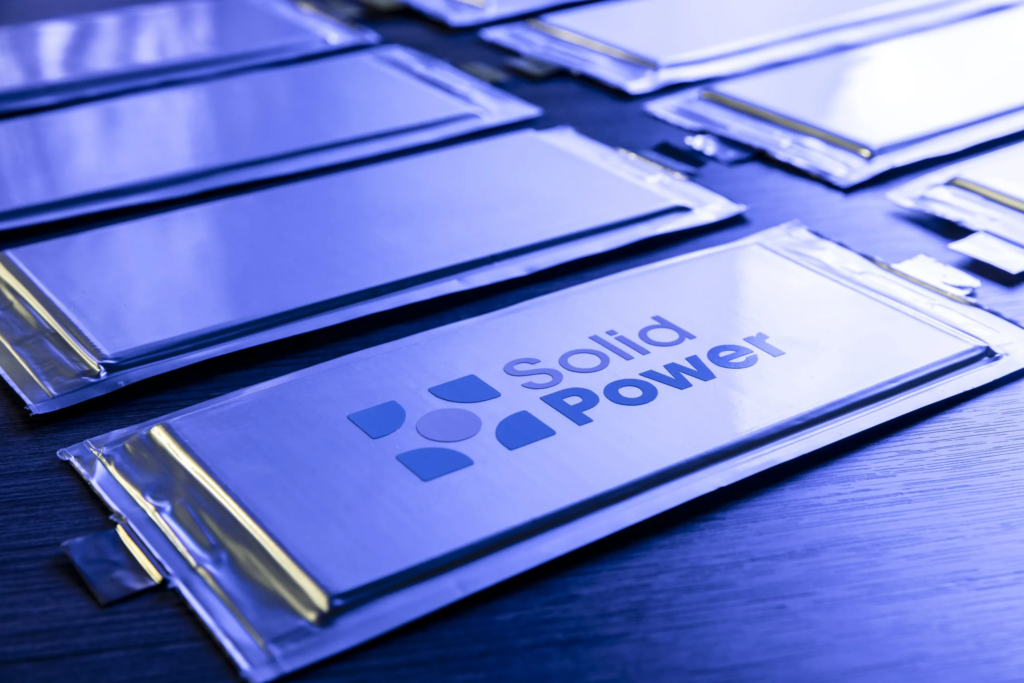
These are some innovations that have the potential to make electric vehicles more affordable with longer ranges, faster charging and improved safety. These innovations also make EV supply chains less damaging to the environment and less harmful to vulnerable communities worldwide.
How can the nation as a whole get to where it needs to be by, say, 2025? I’ll leave you with my own suggestion for legacy automakers and policymakers: don’t be afraid to learn from Tesla. A seamless, almost hassle-free EV ownership experience already exists in America, from plug-and-charge, reliable fast charging to the peace of mind that comes with the vast Supercharger network. I encourage all policymakers and engineers to learn from Tesla’s successful growth strategies. Will automakers and politicians have the courage to consult Elon Musk’s Tesla, or will they try to figure it all out on their own? What do you think?
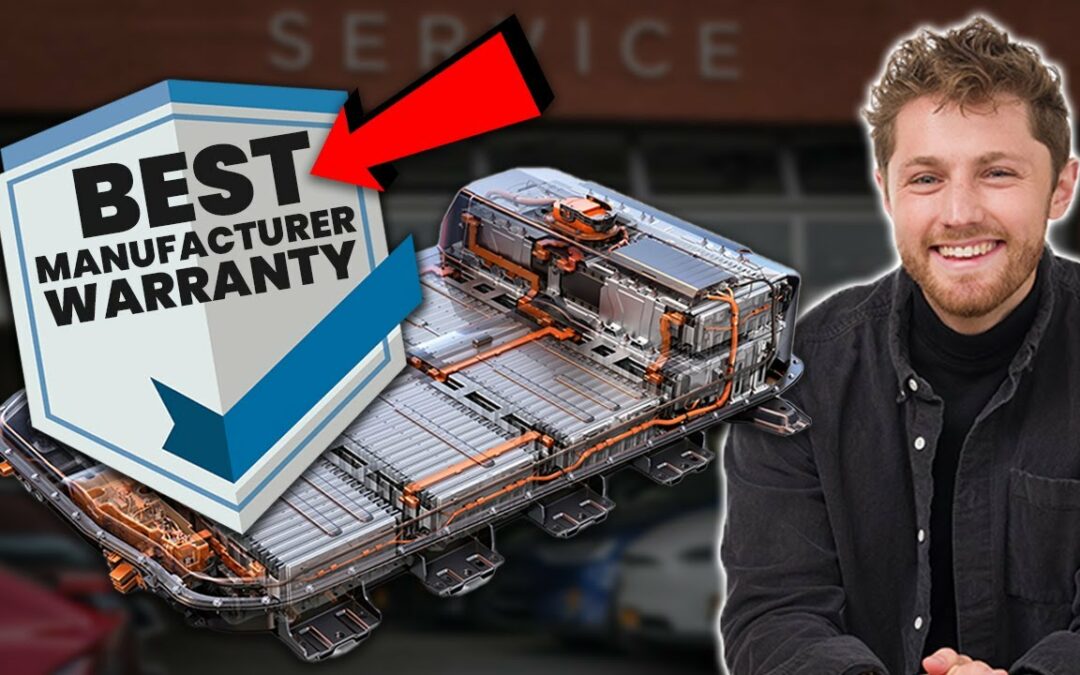
Electric vehicle batteries are expensive to replace — often $10,000 to $20,000 for a fully electric car. While battery costs are expected to drop in the coming years, today’s EV drivers need strong warranty coverage to protect their wallet.
By federal law, all EV and hybrid batteries must be covered for at least 8 years or 100,000 miles. In California, that coverage extends to 10 years or 150,000 miles. But not all warranties are created equal. Some go further than others when it comes to battery degradation, replacement criteria, and coverage for second owners.
So, which EV brands offer the most comprehensive battery warranties in 2025? The top spot might surprise you.
Rivian (8 years or 175,000 miles)
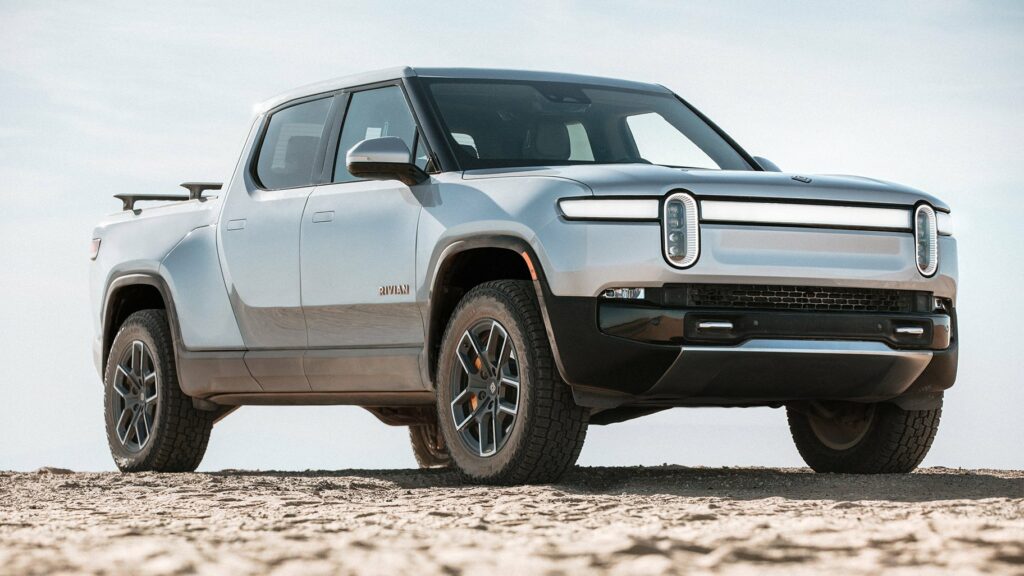
Surprise! The best EV warranty is offered by Rivian for the all-new R1T electric truck and R1S electric SUV. Coverage includes all components inside the high-voltage battery and 70% or more of the battery capacity for 8 years or 175,000 miles, whichever comes first.
Drivetrain components are also covered for 8 years or 175,000 miles. It can be unnerving to purchase a vehicle from a startup like Rivian, so at least they’re offering the best battery warranty there is. Learn more about Rivian’s warranty here.
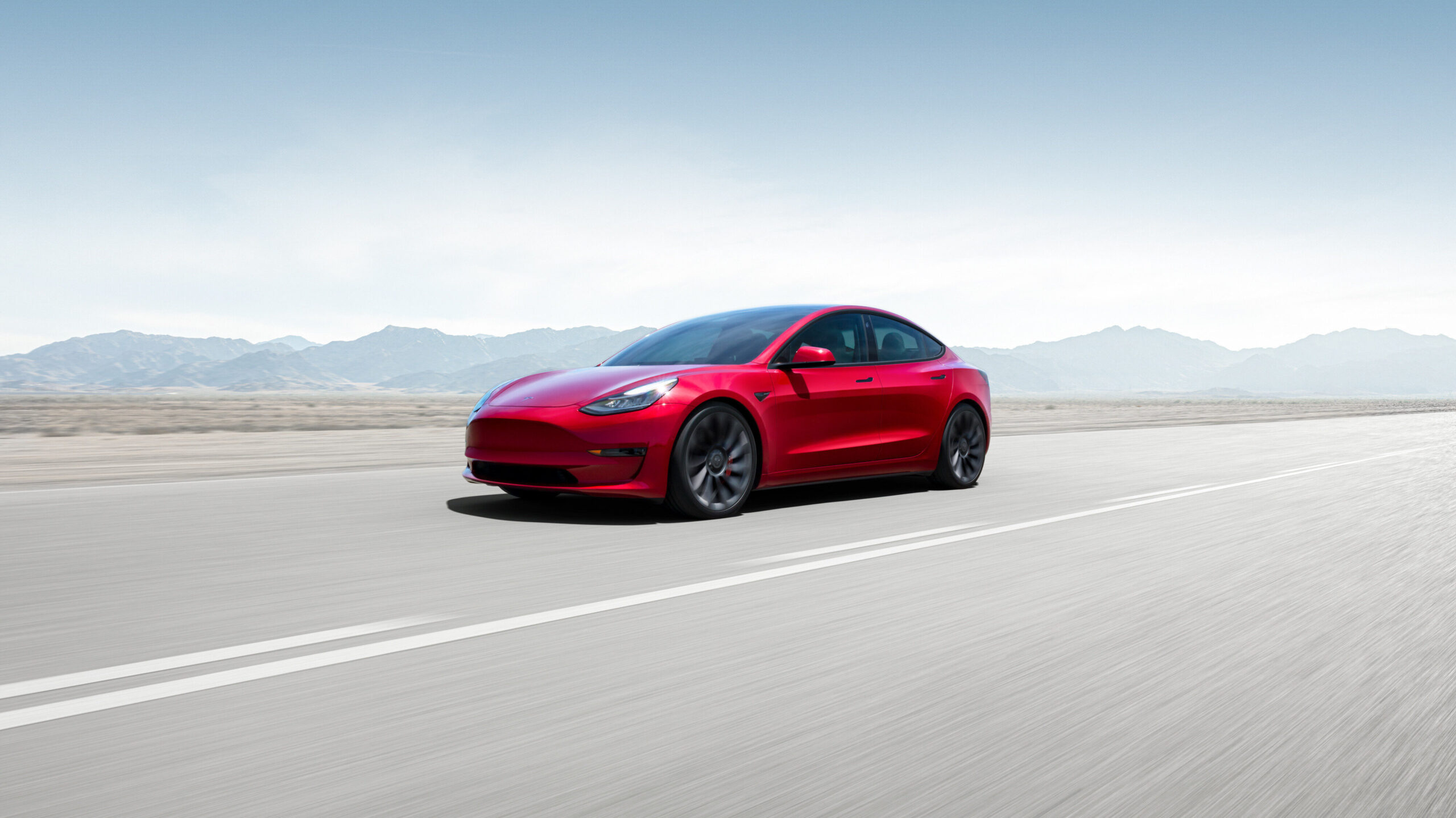
Tesla’s electric powertrain warranty is split into two tiers.
Learn more about Tesla’s battery warranty.
Hyundai and Kia (10 years or 100,000 miles)
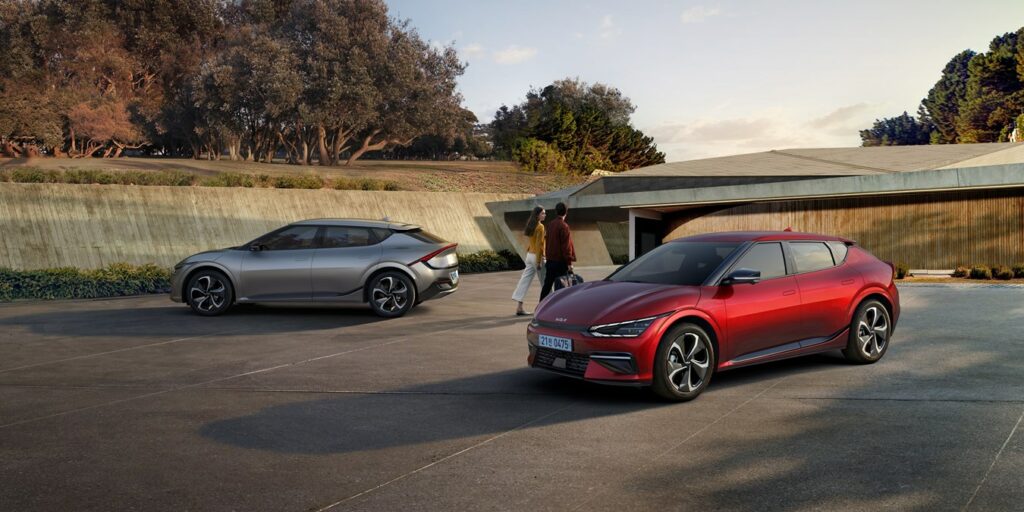
When shopping affordable EVs, you can’t beat Hyundai and Kia’s 10 year/100,000 mile EV warranty. The Hyundai EV warranty covers batteries, motors and powertrain components. There’s also the guarantee of at least 70% battery capacity retention. Hyundai lays it out clearly: “While all electric-car batteries will experience degradation over time, ours will not degrade more than 70 percent of the original capacity during the warranty period.”
Learn more about Hyundai’s electric vehicle battery warranty. You can find Kia’s EV warranty details here.
In 2025, it looks like the industry standard for EV manufacturer warranties is 8 years or 100,000 miles, whichever comes first. This manufacturer warranty applies to the following electric vehicles in 2024:

GM electric models like the Chevrolet Equinox EV, Blazer EV, and Cadillac Lyriq have 8 year/100,000 mile battery warranties with a notable catch. The battery retention portion of the warranty will replace the battery if it falls below 60% of the original capacity under coverage. See the full details here.
Q: What do EV battery warranties cover?
A: Most EV battery warranties cover defects in materials and workmanship, as well as capacity loss beyond a certain threshold (usually 70% of the original capacity). If your battery fails or degrades too quickly, it should be repaired or replaced under warranty.
Q: How long are EV battery warranties?
A: Federal law requires at least 8 years or 100,000 miles of coverage. In California and other CARB-aligned states, coverage extends to 10 years or 150,000 miles. Some automakers go above and beyond these minimums.
Q: Who has the best EV battery warranty in 2025?
A: As of 2025, Hyundai and Kia offer some of the most generous EV battery warranties, with 10-year/100,000-mile coverage that includes transferable protection and specific degradation thresholds. Tesla, Ford, and Toyota also offer strong warranties, but terms vary, especially for used EVs.
Q: Do EV battery warranties transfer to new owners?
A: In many cases, yes — but not always. Some automakers offer fully transferable warranties, while others reduce or void coverage after resale. Always confirm the terms before buying a used EV.
Q: Can I get extended protection for my EV battery?
A: Yes. If you plan to keep your EV long-term, an extended warranty can provide added peace of mind. With CarEdge extended warranty plans, you can cover high-cost components like the battery and electric motor after the factory warranty ends.
CarEdge is a trusted resource for car buyers, offering data-backed insights, negotiation tools, and expert guidance to help consumers save time and money. Since 2019, CarEdge has helped hundreds of thousands of drivers navigate the car-buying process with confidence. Learn more at CarEdge.com.

You don’t have to spend one hundred grand to purchase an electric vehicle with great range in 2022. EVs aren’t cheap, but with fuel savings taken into account, the electric lifestyle starts to sound a lot more appealing. There’s a saying in electric mobility: range is king. That’s especially true for frequent road-trippers and those who live in one of America’s remaining charging deserts. These are the electric vehicles with the most range in 2022.
Note: We’ve decided to place an emphasis on affordable electric vehicles with the most range. Affordability is a moving target in 2022’s crazy auto market, but in the realm of EVs, we’ve defined ‘affordable’ as EVs under $65,000. If you’re in the market for luxury, we’ve got those covered too.
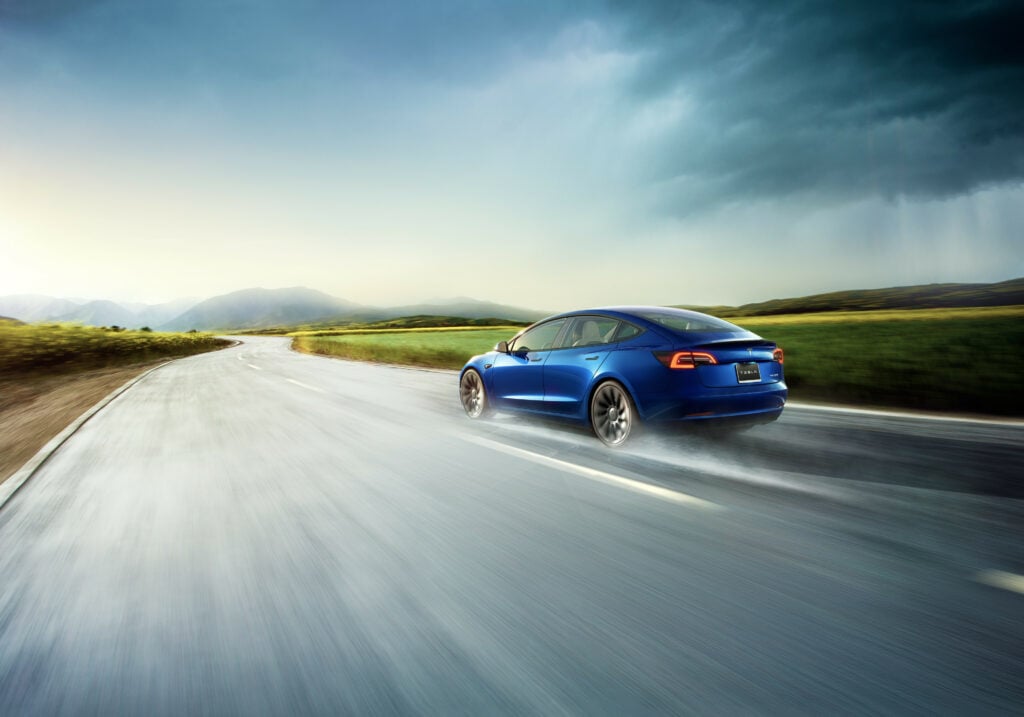
Range: 358 miles
Price: $57,190 with destination
Max charging speed: 250 kW (20-80% in 20 minutes, adding 214 miles of range)
0-60 mph (fun factor):
Federal EV tax credit qualification: No, credits were exhausted. Learn about EV incentives here.
See our full review of the 2022 Tesla Model 3 Long Range here.
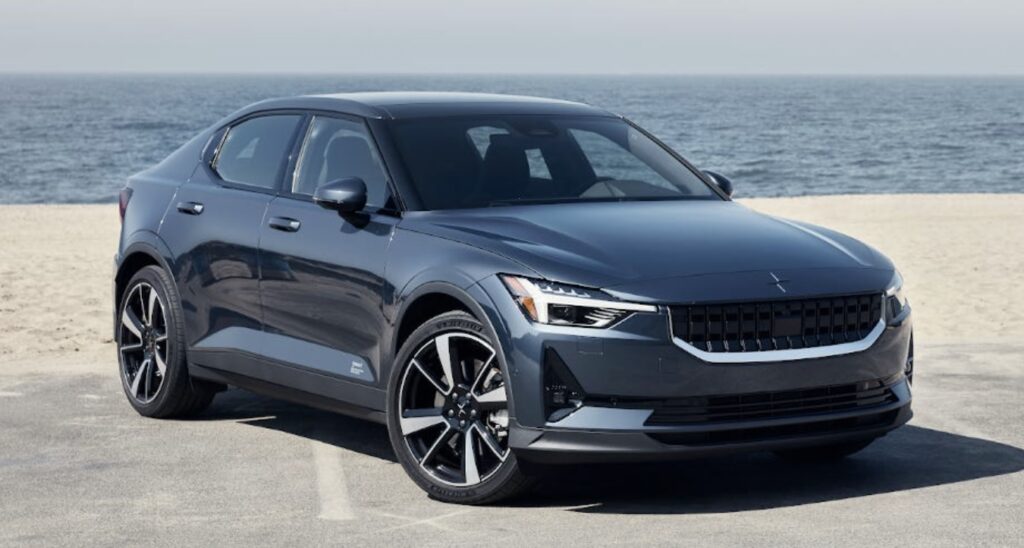
Range: 270 miles
Price: $49,800 with destination
Max charging speed: 250 kW (20-80% in 20 minutes, adding 214 miles of range)
0-60 mph (fun factor): 6.8 seconds
Federal EV tax credit qualification: Yes, learn more about EV incentives here.
See our full review of the Polestar 2 here.
Range: 272 miles
Price: $48,190 with destination
Max charging speed: 150 kW (20-80% in 20 minutes, adding 163 miles of range)
0-60 mph (fun factor): 5.8 seconds
Federal EV tax credit qualification: No, credits were exhausted. Learn about EV incentives here.
See our full review of the 2022 Tesla Model 3 here.
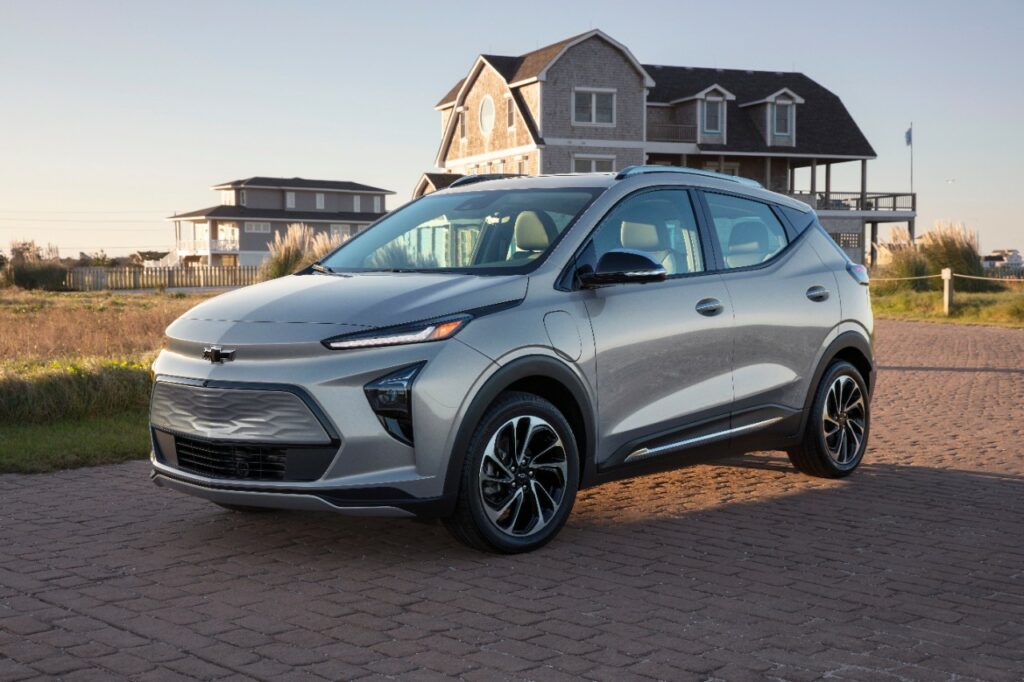
Range: 259 miles
Price: $26,595 with destination (most affordable EV available today)
Max charging speed: 55 kW (adding 100 miles of range in 30 minutes, or 200 miles of range in 75 minutes)
0-60 mph (fun factor): 6.8 seconds
Federal EV tax credit qualification: No, credits were exhausted. Learn about EV incentives here.
See our full review of the Chevrolet Bolt here.
Here’s our list of the cheapest electric cars available today
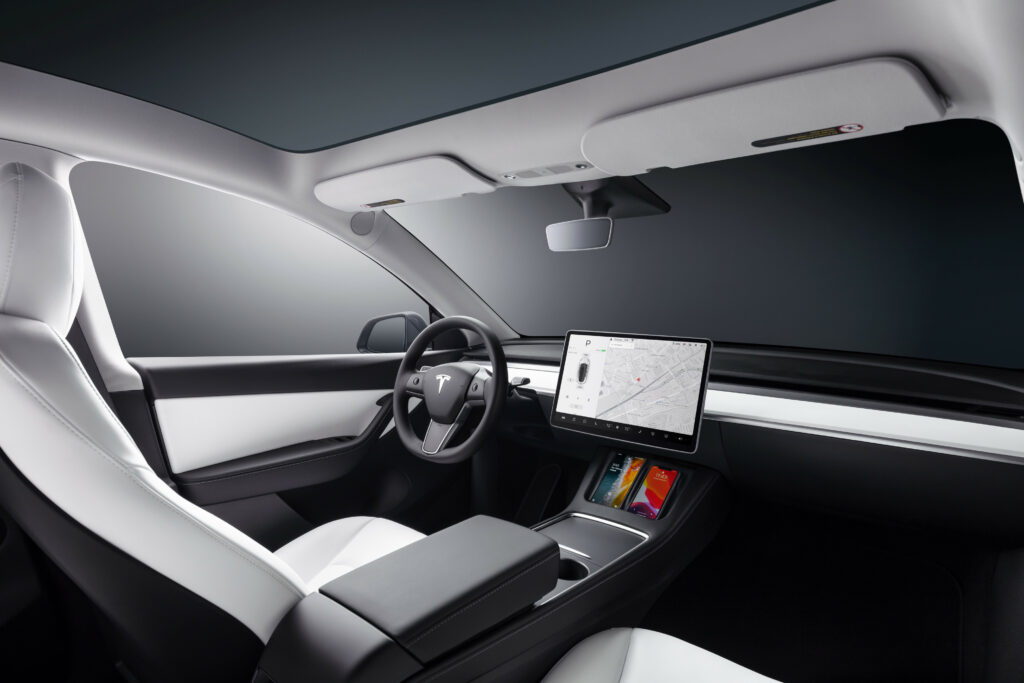
Range: 330 miles
Price: $64,190 with destination
Max charging speed: 250 kW (adding 100 miles of range in 30 minutes, or 200 miles of range in 75 minutes)
0-60 mph (fun factor): 4.8 seconds
Federal EV tax credit qualification: No, credits were exhausted. Learn about EV incentives here.
See our full review of the Tesla Model Y here.

Range: 310 miles
Price: $42,155 with destination
Max charging speed: 235 kW (15-80% in 20 minutes, adding 217 miles of range in 18 minutes)
0-60 mph (fun factor): 7.3 seconds
Federal EV tax credit qualification: Yes, learn more about EV incentives here.
See our full review of the Kia EV6 here.
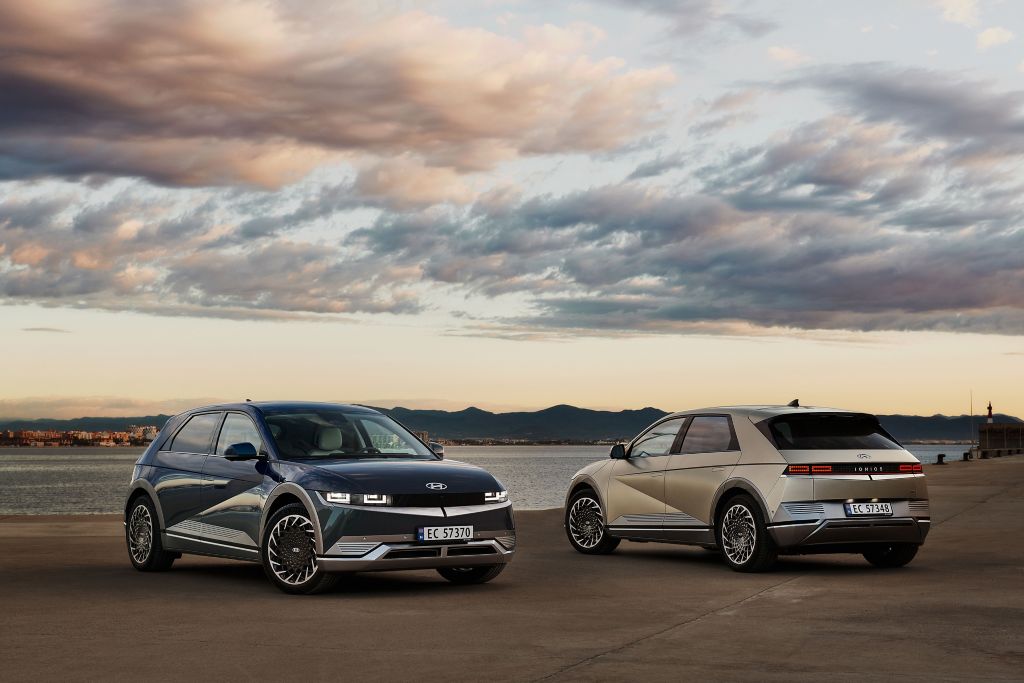
Range: 303 miles
Price: $45,295 with destination
Max charging speed: 235 kW (15-80% in 20 minutes, adding 197 miles of range in 18 minutes)
0-60 mph (fun factor): 7.5 seconds
Federal EV tax credit qualification: Yes, learn more about EV incentives here.
See our full review of the Hyundai IONIQ 5 here.
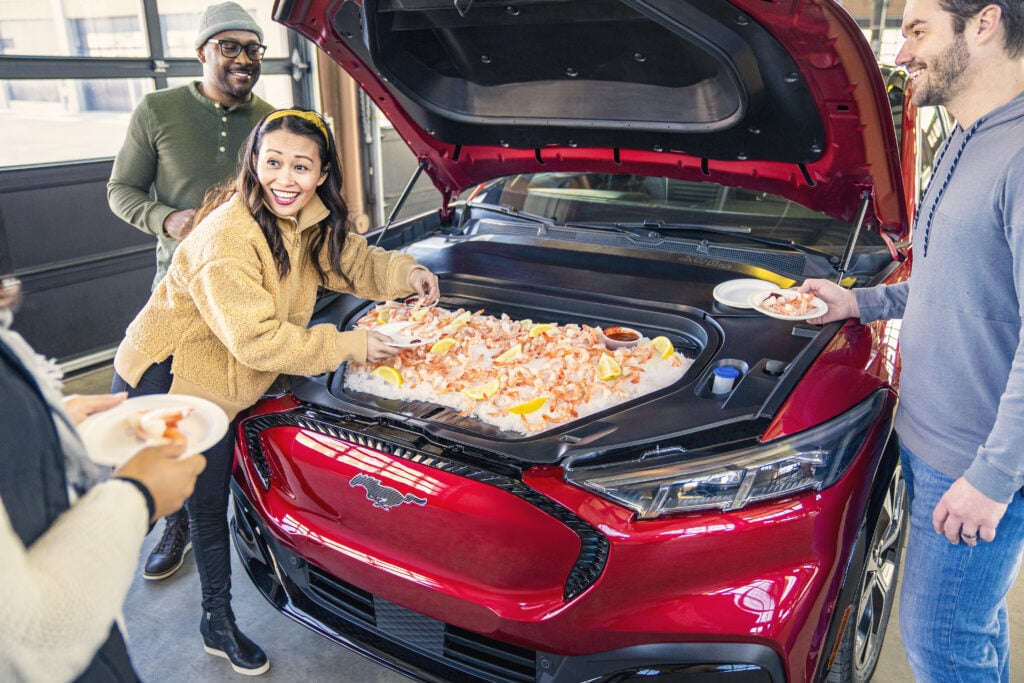
Range: 314 miles
Price: $53,550 with destination
Max charging speed: 150 kW (10-80% in 45 minutes, adding 220 miles of range)
0-60 mph (fun factor): 6.1 seconds
Federal EV tax credit qualification: Yes, learn more about EV incentives here.
See our full review of the Ford Mustang Mach-E here.
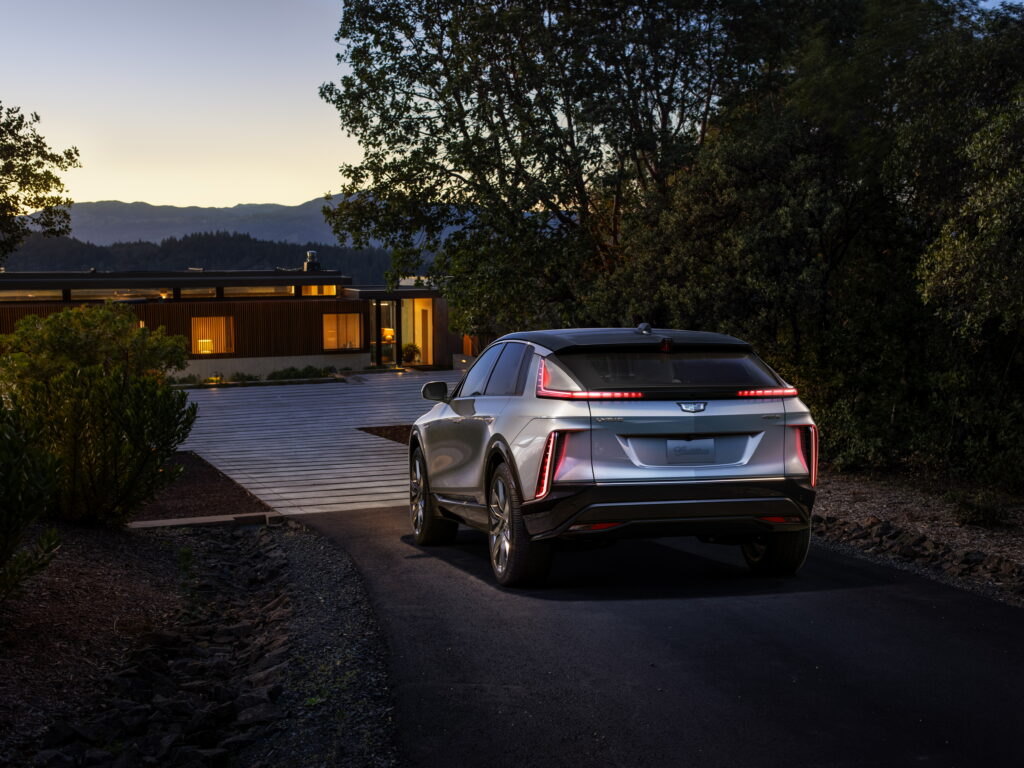
Range: 312 miles
Price: $64,185 with destination
Max charging speed: 190 kW (adding 195 miles of range in 30 minutes)
0-60 mph (fun factor): 6.4 seconds
Federal EV tax credit qualification: No, credits were exhausted. Learn about EV incentives here.
See our full review of the Cadillac Lyriq here.
See the latest EV availability and wait times for EVERY model
There are now three electric pickup trucks on American roads, but buying one is easier said than done. Everyone wants one, and wait lists extend months and in some cases, years. We’ve decided to include electric trucks that are not yet available for purchase, so long as specs have been released and reservations or orders can be placed today.
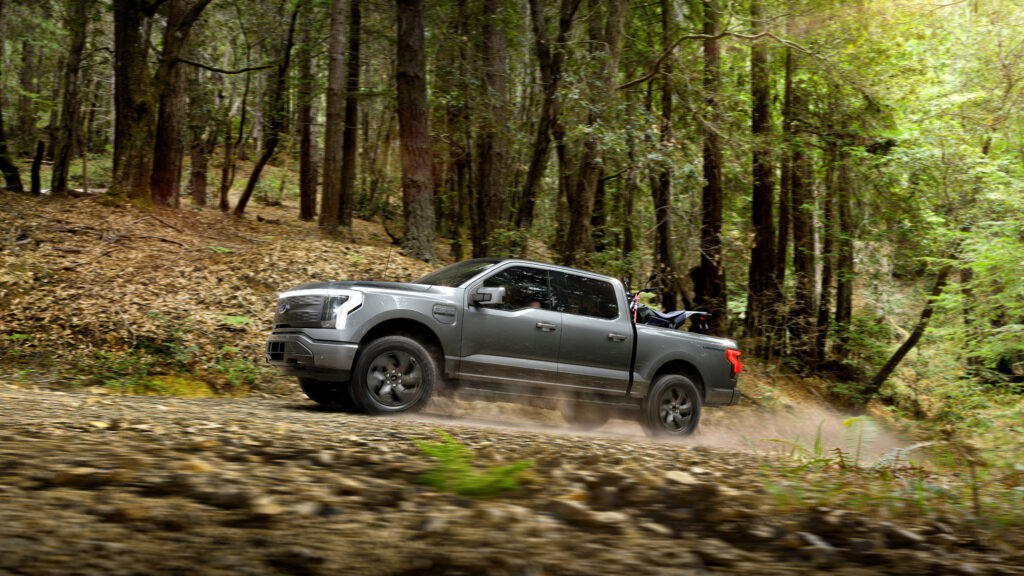
Range: 320 miles
Price: $72,474
Max charging speed: 130 kW (15-80% in 40 minutes)
0-60 mph (fun factor): estimated 4.5 seconds
Federal EV tax credit qualification: Yes, learn more about EV incentives here.
See our full review of the F-150 Lightning here.
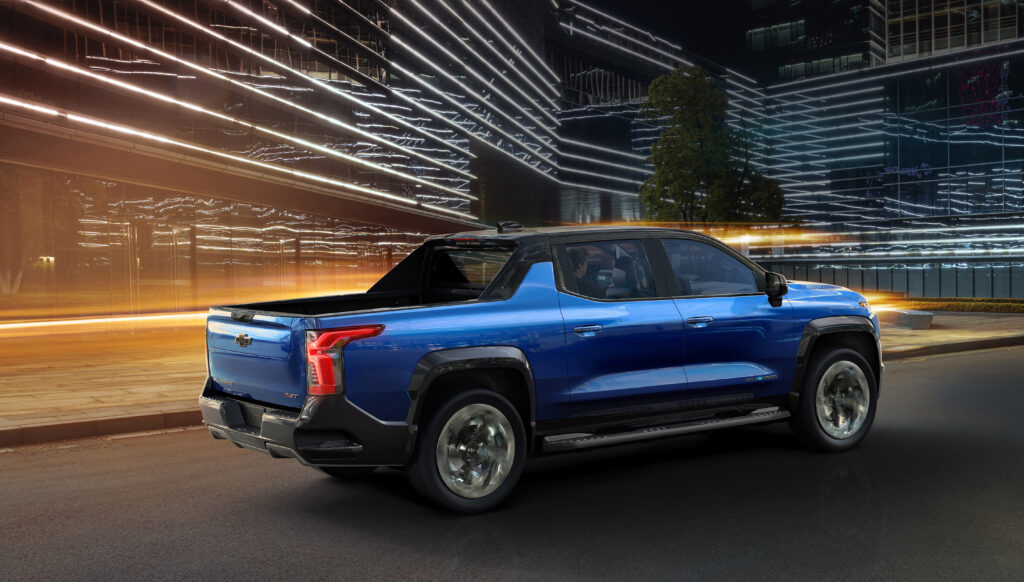
Range: Estimated 400 miles
Price: $42,000 – $100,000+
Max charging speed: 350 kW (adding 100 miles of range in 10 minutes)
0-60 mph (fun factor): N/A
Federal EV tax credit qualification: No, credits were exhausted. Learn about EV incentives here.
See our full review of the Silverado EV here.
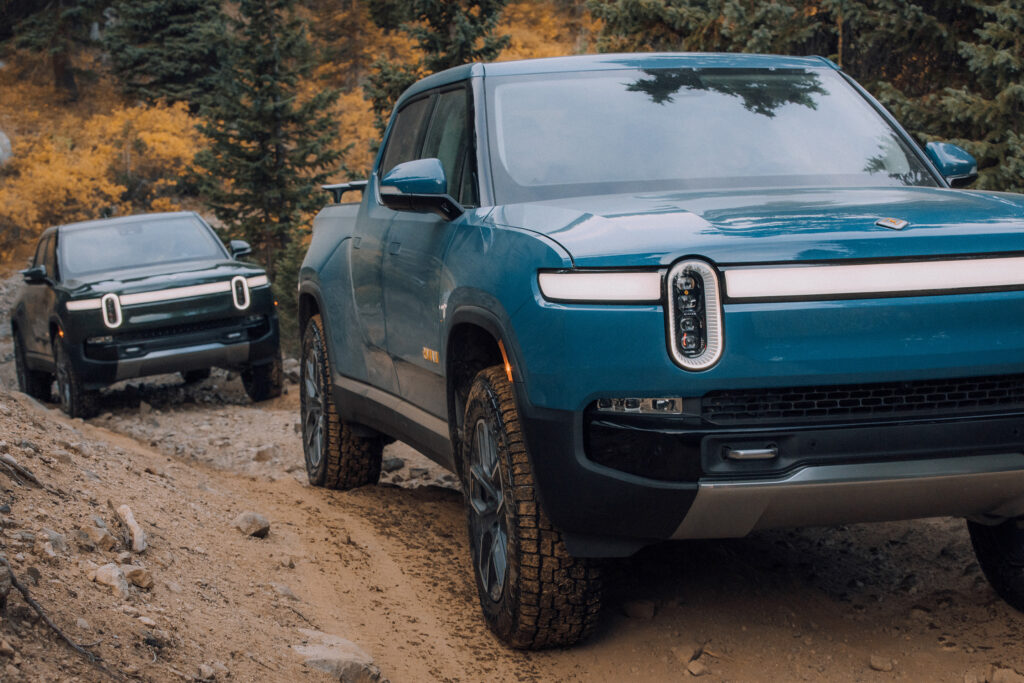
Range: 314 miles
Price: $80,000 – $100,000+
Max charging speed: 220 kW (10-80% in 40 minutes)
0-60 mph (fun factor): 3.0 seconds
Federal EV tax credit qualification: Yes, learn more about EV incentives here.
Learn more about Rivian’s R1T and R1S full-size SUV.
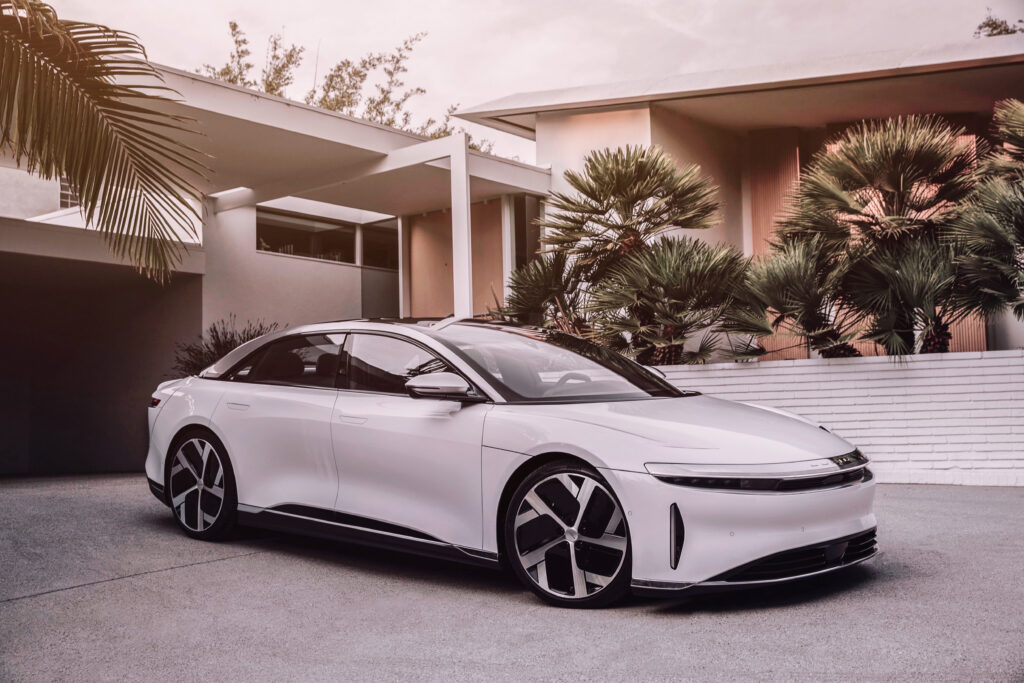
Range: 516 miles
Price: $139,000
Max charging speed: 300 kW (adding 300 miles of range in 20 minutes)
0-60 mph (fun factor): 2.6 seconds
Federal EV tax credit qualification: Yes, learn more about EV incentives here.
See our full review of the Lucid Air here.
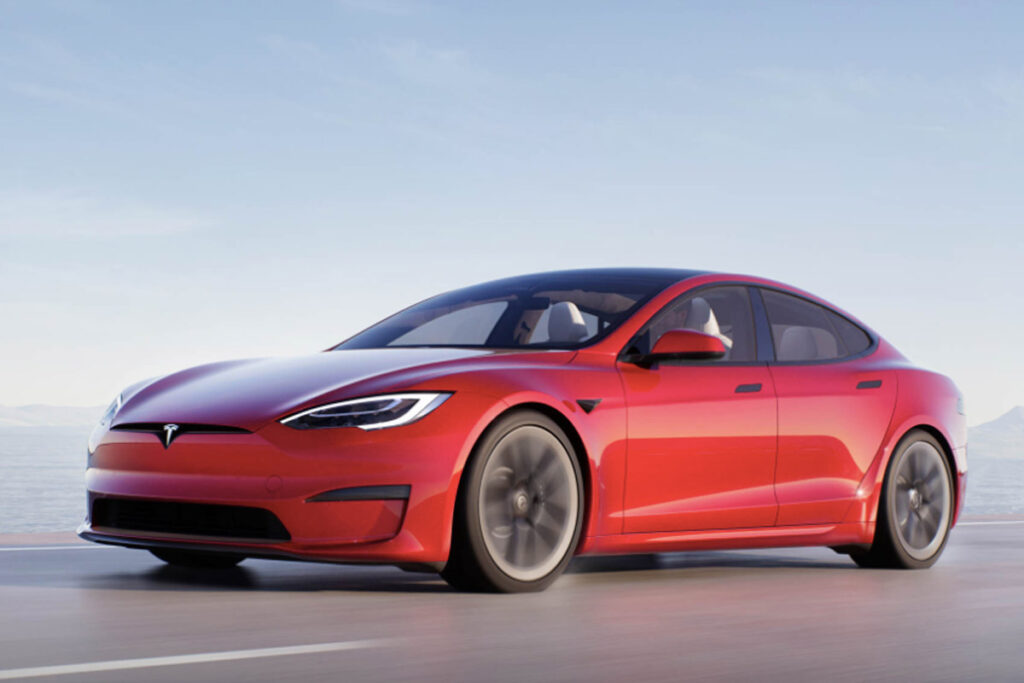
Range: 405 miles
Price: $101,990
Max charging speed: 250 kW (adding 200 miles of range in 15 minutes)
0-60 mph (fun factor): 3.1 seconds
Federal EV tax credit qualification: No, credits were exhausted. Learn about EV incentives here.
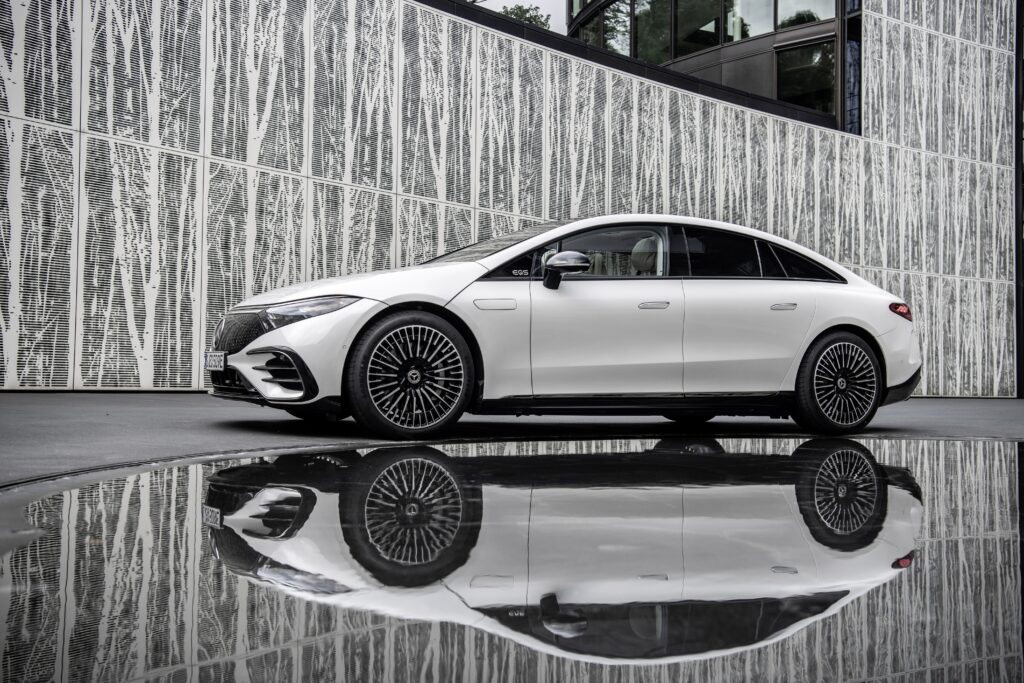
Range: 350 miles
Price: $139,000
Max charging speed: 200 kW (adding 200 miles of range in 20 minutes)
0-60 mph (fun factor): 5.5 seconds
Federal EV tax credit qualification: Yes, learn more about EV incentives here.
See our full review of the Mercedes EQS here.
What does the future hold? Not necessarily more range, surprisingly. Many auto analysts expect range for relatively affordable EVs to settle in around the 250-350 mile range. Why? Battery shortages loom on the horizon. Raw materials are in high demand, and there are only so many places on Earth to get lithium, cobalt and other materials.
Should you buy an EV now or wait? If you can find what you want for MSRP or very close to it, it just might be the right time to buy or lease. All signs point towards higher EV prices for 2023 and 2024 model years.

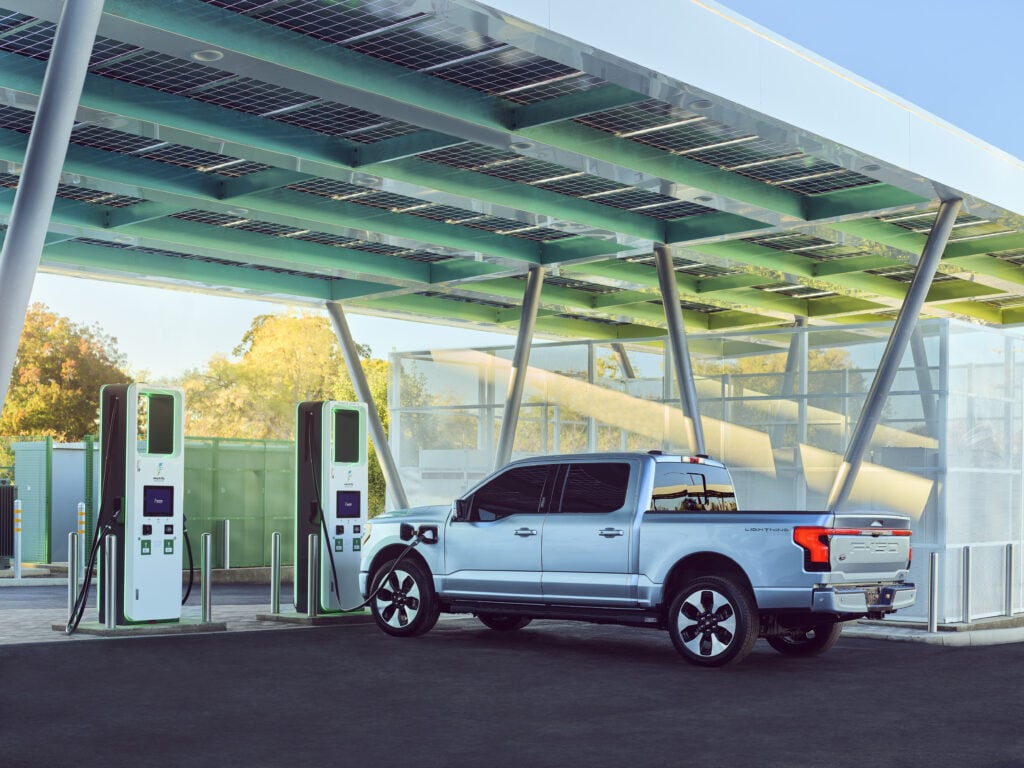
Until there’s a Carfax for electric vehicle battery health, car buyers should bear in mind the unknowns of the used EV market. We’re used to hearing of highway miles versus stop and go, or oil changes every 3,000 miles. When it comes to the health of a 1,000 pound battery pack that costs $15,000 to replace, it’s important to know how ownership habits affect the longevity and performance of a modern electric car. How does fast charging impact the health of the battery? Is it worse than plugging in at home? We’re about to address these very important questions and more.
In automotive media, we often harp on the quickest charging possible. I’m guilty of that myself, and it IS an important measure of an electric vehicle’s engineering. EVs will never win over the masses with charging rates like this. However, reliance on direct current (DC) fast charging is a real threat to the longevity of EVs that we all expect and embrace. A ruined battery with a stunted lifespan is not only an expensive fix, it’s horrible for the environment.
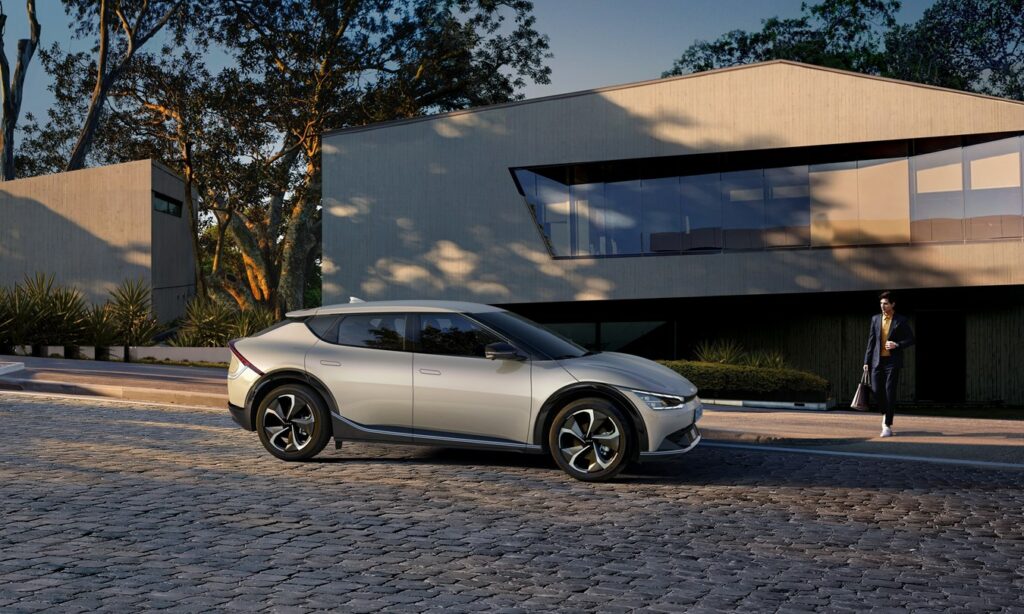
Every new tech revolution brings its own growing pains. With the personal computer came lessons learned about viruses, scammers and how to use email without annoying everyone. EVs bring a new set of challenges, but they’re challenges that can easily be overcome with a little bit of outreach and driver education.
So without further ado, here’s a public service announcement from CarEdge Electric:
Don’t rely on fast charging for your daily charging needs
Why is this important enough to shout from the rooftops? DC fast charging stresses batteries to the point of degradation. Let’s take a look at a recent literature review of what scientists have found.
Authors Bhagavathy et al. (2021) summarized the last decade’s worth of research in the realm of battery degradation. Here are the key takeaways:
Who cares, 3% to 6% is nothing, right? Not so. When most electric vehicles have a rated range of just 220 to 275 miles, every mile counts. Losing 6% of rated range to degradation would drop my own Hyundai IONIQ 5’s range from 256 miles on a charge down to 240 miles. I’d rather treat my battery nicely and keep that extra 16 miles of driving range. I might need it someday.
Other factors that reduce the longevity of EV batteries are:
Generally, 10% – 85% is the range of optimal battery health.
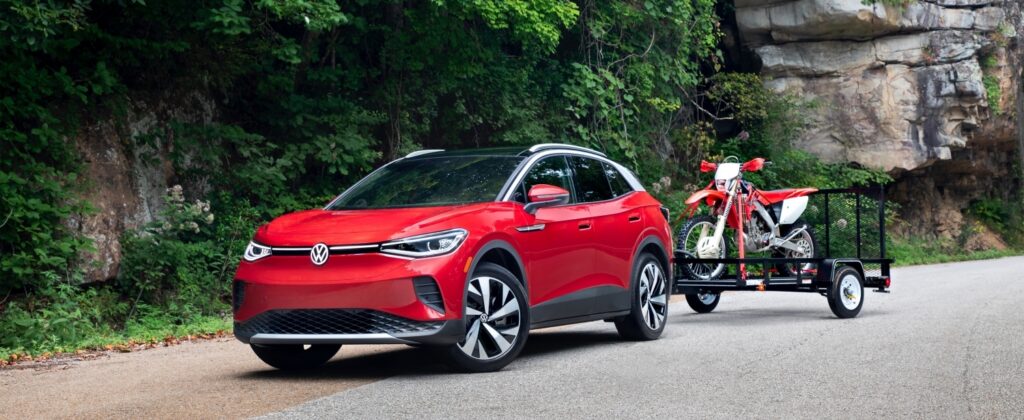
More likely than not, the electric vehicle you’re in the market for comes with some kind of free charging incentive. This is great for road trips, but be careful not to abuse the privilege. If you rely on DC fast chargers at Electrify America or Tesla Superchargers all the time simply because you can, you may end up wishing you didn’t when your range slips away quicker than expected.
Here’s everything you’ve wanted to know about Electrify America charging stations
Almost all electric vehicles use some version of the tried and true lithium ion battery. The specific chemistry of each battery is what gives it particular performance characteristics, strengths and weaknesses. Most are named after the makeup of their cathodes, the negatively-charged electrode.
To further explain, here are a few of the most common electric vehicle battery chemistries:
| Battery Chemistry | Strengths | Weaknesses | Featured In: |
|---|---|---|---|
| NCM (Lithium-Nickel-Manganese-Cobalt) | High energy density, lower cost, longer lifespan | Can't have optimal energy AND power | Ford Mustang Mach-E, F-150 Lightning, Hyundai IONIQ 5, Kia EV6, some Teslas |
| NMA (Lithium-Nickel-Manganese-Aluminum) | Cobalt-free (good for Earth) | Some have lower energy density | TBD |
| NCMA (Lithium-Nickel-Cobalt-Manganese-Aluminum) | Less cobalt (good for Earth), higher energy density | Limited supply | GM's Ultium platform, some Teslas |
| LFP (Lithium-Iron-Phosphate) | Rechargeability, long life, low cost, availability | Less energy dense, less power | Tesla Model 3 RWD |
| Solid-State (many chemistries in development) | More energy dense, safer, faster charging | Yet to be produced at mass scale | TBD |
One of the greatest strengths of the lithium-iron-phosphate (LFP) battery is its ability to withstand repeated charge and discharge cycles better than other batteries. A rear-wheel drive Tesla Model 3 with LFP batteries would not be as harmed by repeated fast-charging as an EV with other battery chemistries. Perhaps that’s why Hertz was so eager to buy 100,000 of them for their rental fleet!

For years, engineers and EV enthusiasts alike have been anticipating the arrival of the first solid-state batteries in production electric-vehicles. When will it happen at last? It’s looking like 2025 at the earliest. And even then, solid-state batteries may only arrive in hybrid or plug-in hybrid powertrains (according to Toyota’s plan).
Other than that, the future is here folks. Competing battery chemistries are in a tug-of-war for market share and ‘strategic partnerships’, as the automakers like to call it. But more important than automaker plans is the need for drivers to learn the nuances of EV ownership. Don’t fast-charge your EV just because you can, do it when you must. Otherwise, we could be looking at a used EV market swamped with degraded and abused batteries just a few years down the road. That wouldn’t help the EV revolution one bit.

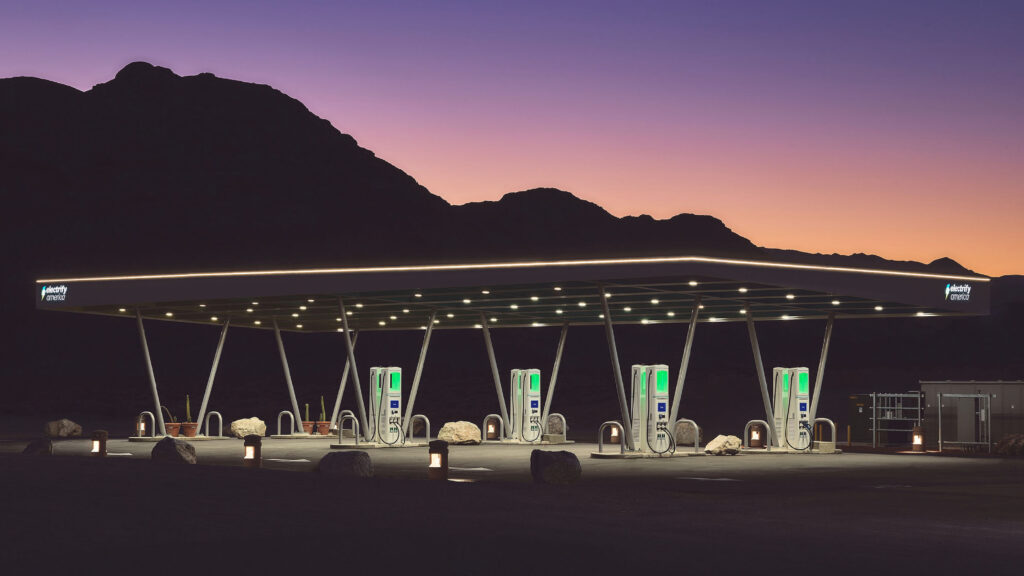
Electric vehicles are far from cheap, but many 2022 EVs come with free charging incentives that sweeten the deal. If you travel America’s interstates often, you’ll want to check out these free charging incentives. It adds up quickly!
The new Audi Q4 e-tron includes 250kWh of complimentary charging at Electrify America. Audi e-tron GT buyers get three years of free charging at Electrify America. With an EPA-rated range of 241 miles with a 77 kilowatt-hour battery pack, you’ll be good to go for plenty of charging stops. The Q4 e-tron will take about 40 minutes to charge from 10% to 80%. The much pricier e-tron GT can do the same in as little as 22 minutes.
The 2022 BMW iX SUV and i4 electric sedan will come with two years of 30-minute complimentary charging sessions at Electrify America charging stations. Depending on how much you travel, that could save you a few thousand dollars in public charging costs!
This is a better deal than it sounds. Level 2 home charging is not cheap to install, unless you’re lucky enough to live where incentives abound. Chevrolet will cover standard installation of a Level 2 charging outlet for customers who purchase or lease a 2022 Bolt EUV or Bolt EV. Learn more here. Here’s our review of the 2022 Bolt and Bolt EUV.
The 2023 Fisker Ocean is looking like it will be a popular electric crossover once it arrives. Fisker has partnered with Electrify America, however it’s not been shared if there will be a complimentary charging incentive for Ocean drivers. Regardless, it’s an amazing vehicle (on paper for now). We’re big fans of the innovative Fisker Flexee lease program.
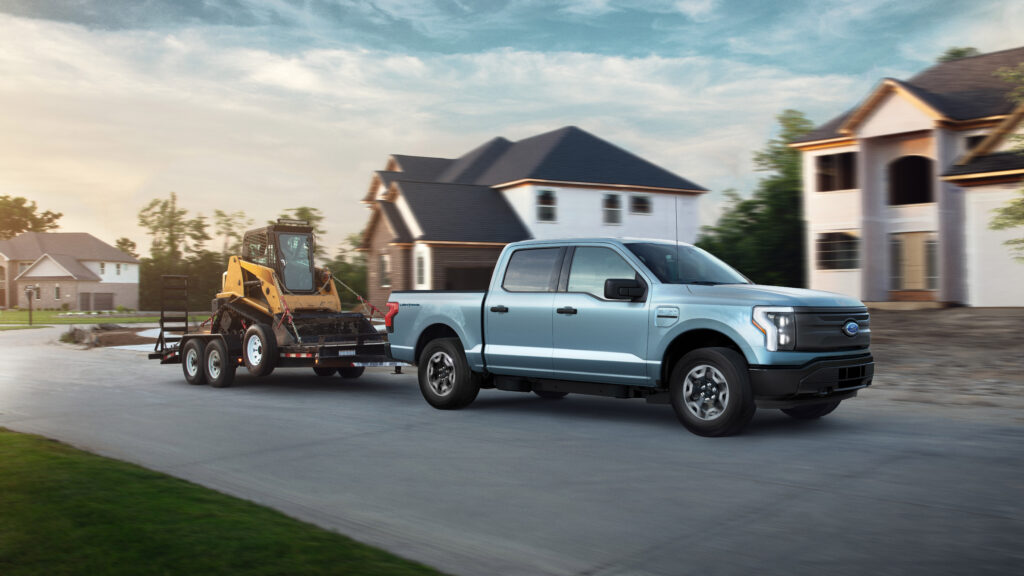
Yes, the truck we’ve all been waiting for does come with 250 kilowatt-hours of free charging at Electrify America. That’s equal to about two and a half fill-ups, or enough to drive about 700 to 800 miles in the F-150 Lightning. Once the incentive expires, expect a big charging session at Electrify America to cost about $25-35 in the F-150 Lightning. Learn more about the 2022 F-150 Lightning here.
Wondering which EVs are available in 2022? Here’s the full list, with pricing and wait times updated regularly.
Just like the F-150 Lightning, Mustang Mach-E drivers will get 250 kilowatt-hours of free charging at Electrify America. That’s enough to have about three or four free charging sessions on your first road trip. Here’s our review of the 2022 Mustang Mach-E, which by the way is one of the top-selling EVs in America (but still far behind Tesla).
The Genesis GV60 is the upscale sibling to my very own Hyundai IONIQ 5, but it comes with an even better charging incentive. Genesis GV60 buyers will get free 30-minute charging sessions for three years at Electrify America.
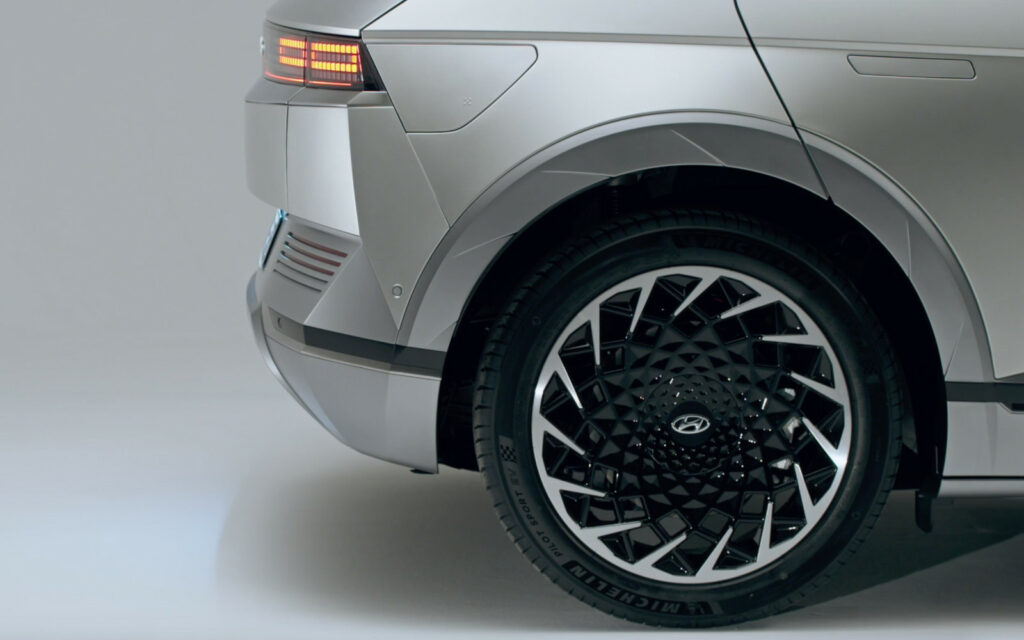
Hyundai and Kia have raced towards the top of the EV sales charts since launching their twin electric crossovers (some would argue they’re oversized hatchbacks). The Hyundai IONIQ 5 comes with two years of unlimited 30-minute charging sessions at Electrify America’s 800 stations nationwide. Electrify America is growing quickly, so it’s likely there are more than a few EA chargers along your most frequented routes.
I recently bought an all-wheel drive IONIQ 5 Limited, and I love it. Here’s how I bought one at MSRP (no markup!), plus all you ever wanted to know about the vehicle in this CarEdge review.
Kia decided to do things differently when setting up their partnership with Electrify America. EV6 owners 1,000 kilowatt-hours of free charging at Electrify America stations. The EA incentive expires after three years. With the efficiency of the Kia EV6, 1,000 kWh of free charging is likely to be good for about 3,500 miles of driving. Full review of the Kia EV6
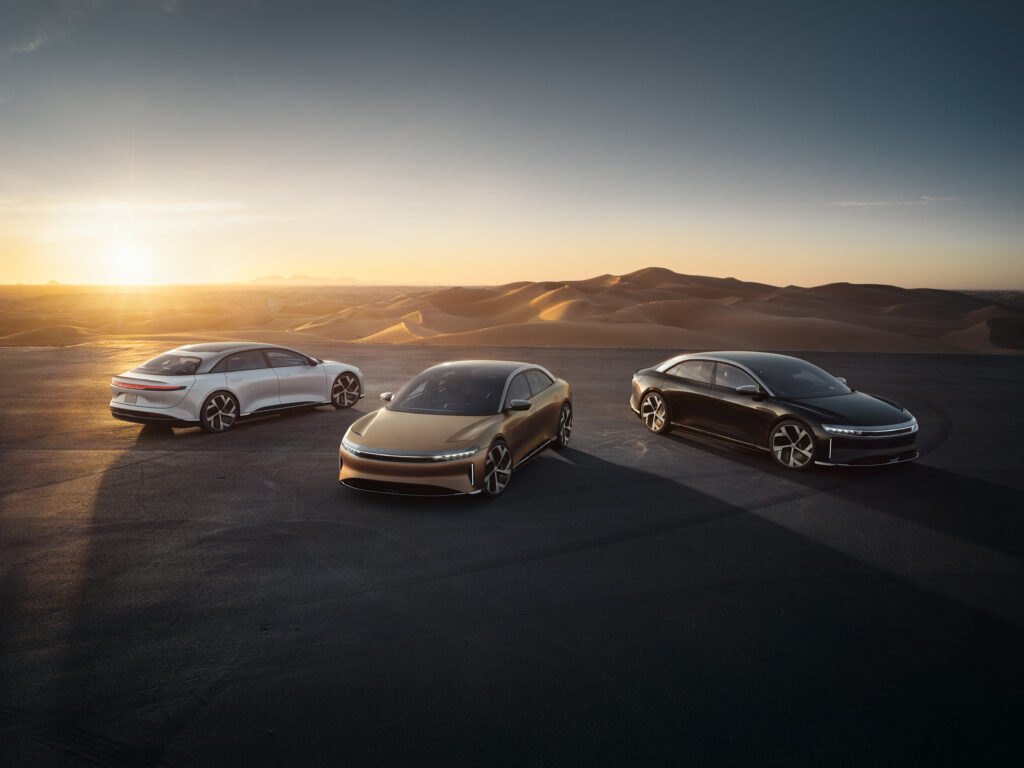
Lucid has EXTENDED their free charging partnership with Electrify America. Now, all Lucid customers who place their vehicle order before June 30, 2022 will get three years of free charging at Electrify America. Better get that wallet out! The Lucid Air starts at $77,400, however prices for top-level trims exceed $170,000. See the details here.
America’s first mass-market electric vehicle, the Nissan Leaf, is still a solid bargain in 2022.
(Check out the only cheap EVs available today)
Drivers purchasing or leasing a new Nissan LEAF receive $250 EVgo charging credits, which could last you a while with the Leaf’s 150 to 226 mile range. Here are the details from EVgo.
The first 10,000 customers who reserved a 2023 Nissan Ariya by January 31, 2022 get a $500 credit for EVgo’s growing network of charging stations. If you’re just now thinking about buying an Ariya, it’s a bit too late. Still, the Ariya is looking to be one of the nicest Nissan’s ever. Is it worth the price tag? Here’s what we think.

The Polestar 2 has several advantages over its competitors: it’s available now, starts under 50 grand, and features a no-haggle direct-to-consumer price. Another benefit of the Polestar 2 is a free charging incentive. The Polestar 2 comes with two years of free 30-minute charging sessions at Electrify America stations. That could save drivers thousands of dollars, depending on how many road trips you take.
Although it’s fantastic that Rivian is building its own charging network (like Tesla did), it’s a bit of a letdown for Rivian buyers who hoped to get a free charging incentive at Electrify America. The map below is where Rivian plans to have Adventure Network chargers, NOT where they currently are. All buyers of the Rivian R1T electric truck and R1S electric full-sized SUV will get one year of free charging on the Rivian Adventure Network.

The upside? This charging network will be specializing in rural destinations like National Parks, National Forests and the like. That will be transformative for charging in America.
Despite announcing a ‘partnership’ with America’s third-largest charging network EVgo, there’s no free charging incentive for now. As mentioned above, EVgo has 800 public fast-charging locations and 1,200 Level 2 charging stalls spanning 68 metropolitan areas and 35 states.
Although we’re a Subaru household (prior to taking ownership of our new IONIQ 5), the Solterra EV’s range, charging speed and price are a real bummer. Here’s our full review of the 2023 Subaru Solterra.
Back in the early days of the Model S, Tesla did offer insanely good free charging incentives on its young Supercharger network. From 2012 to 2018, some Tesla vehicles had free charging for life. If you’re looking for free charging or generous federal EV incentives, you’ll have to shop elsewhere.
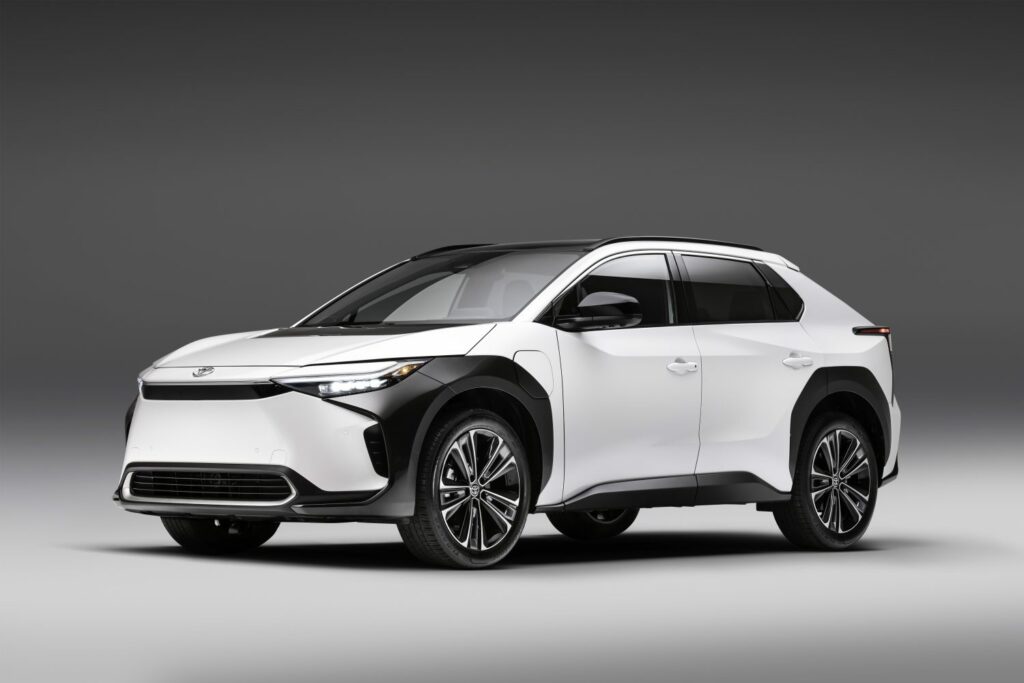
The all-new Toyota bZ4X electric crossover takes an hour to charge (at a ‘fast’ charger), has merely okay range, and isn’t all that affordable, but at least you get one year of free charging at EVgo’s network of chargers. EVgo has 800 public fast-charging locations and 1,200 Level 2 charging stalls in 35 states. Here’s why we aren’t fans of the bZ4X. Just buy a RAV4 Prime! That’s probably what Toyota wants you to do anyway.
The ID.4 has one of the best free charging incentives available today. Although the 2021 model year’s offer of three years of UNLIMITED free charging has ended, the 2022 Volkswagen ID.4 includes three years of free 30-minute charging sessions at Electrify America stations. With the 2022 model’s quicker charging rate and improved charging curve, this should be enough for most sessions to be free. Rarely will ID.4 drivers need to stay plugged in for more than 30 minutes at a DC fast charger. Full review of the VW ID.4
Buyers of the C40 Recharge and XC40 Recharge get 250 kilowatt-hours of free charging at Electrify America. But that’s not all: Volvo is also enticing drivers with a year of free access to Electrify America’s Pass+ membership, which offers charging at a discounted rate. The Pass+ membership offers charging at about 30% lower rates than using the network as a guest, but membership normally costs $4 per month.
Making the switch to an electric vehicle would be a no-brainer if they weren’t so darn expensive. It’s hard to find a cheap EV, but a few are out there. For many, free charging incentives are compelling enough to close the deal. Personally, I’ve saved a few hundred dollars in charging costs over the first few months of EV ownership by using my IONIQ 5’s Electrify America incentive.
This begs the question: would you rather have faster charging times, or longer range? Does stopping for 15 minutes every 200 miles sound better than stopping for 45 minutes every 300? Let us know what you think the future of EV charging should look like. One thing is for sure, EVs are coming to roads near you.